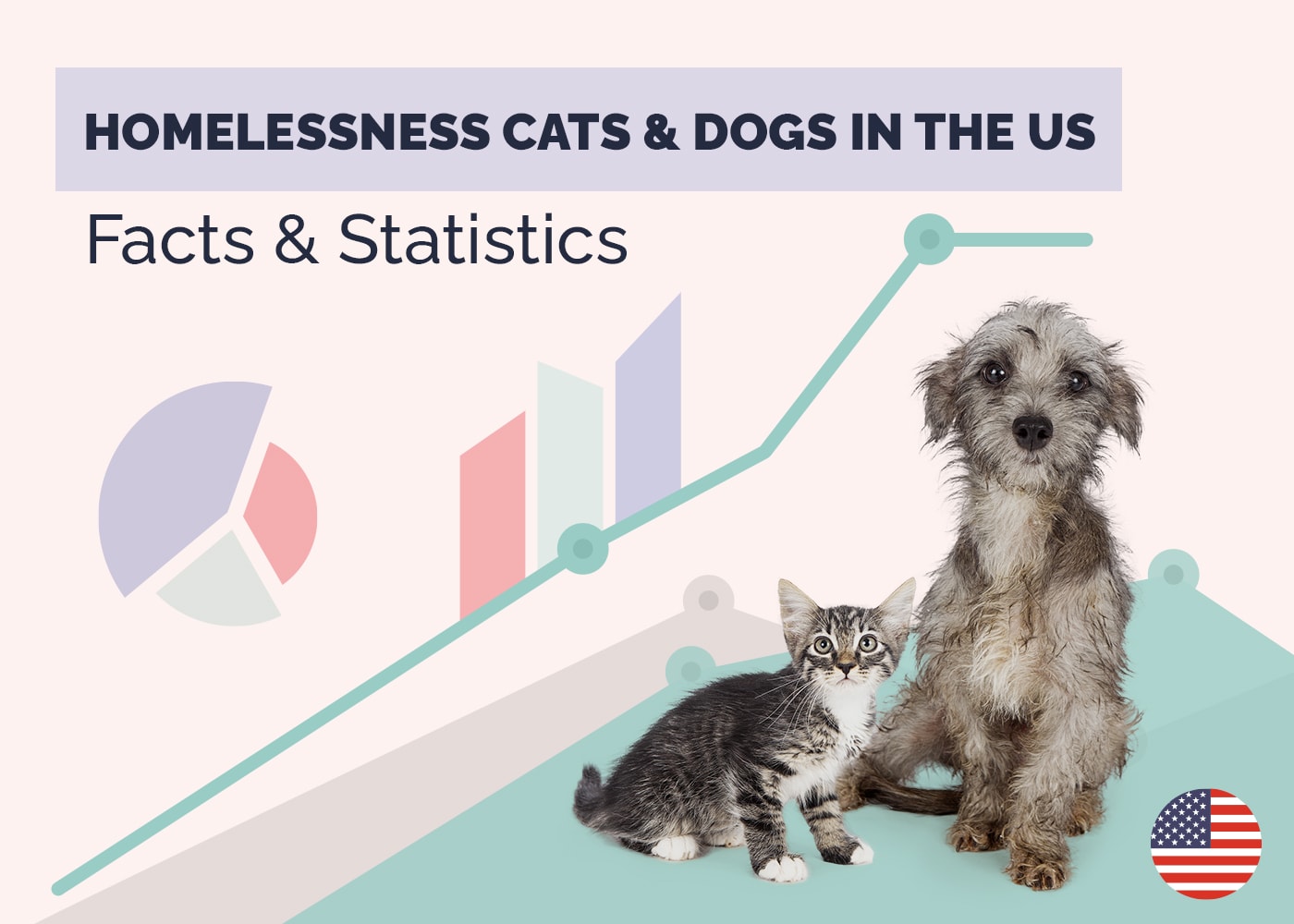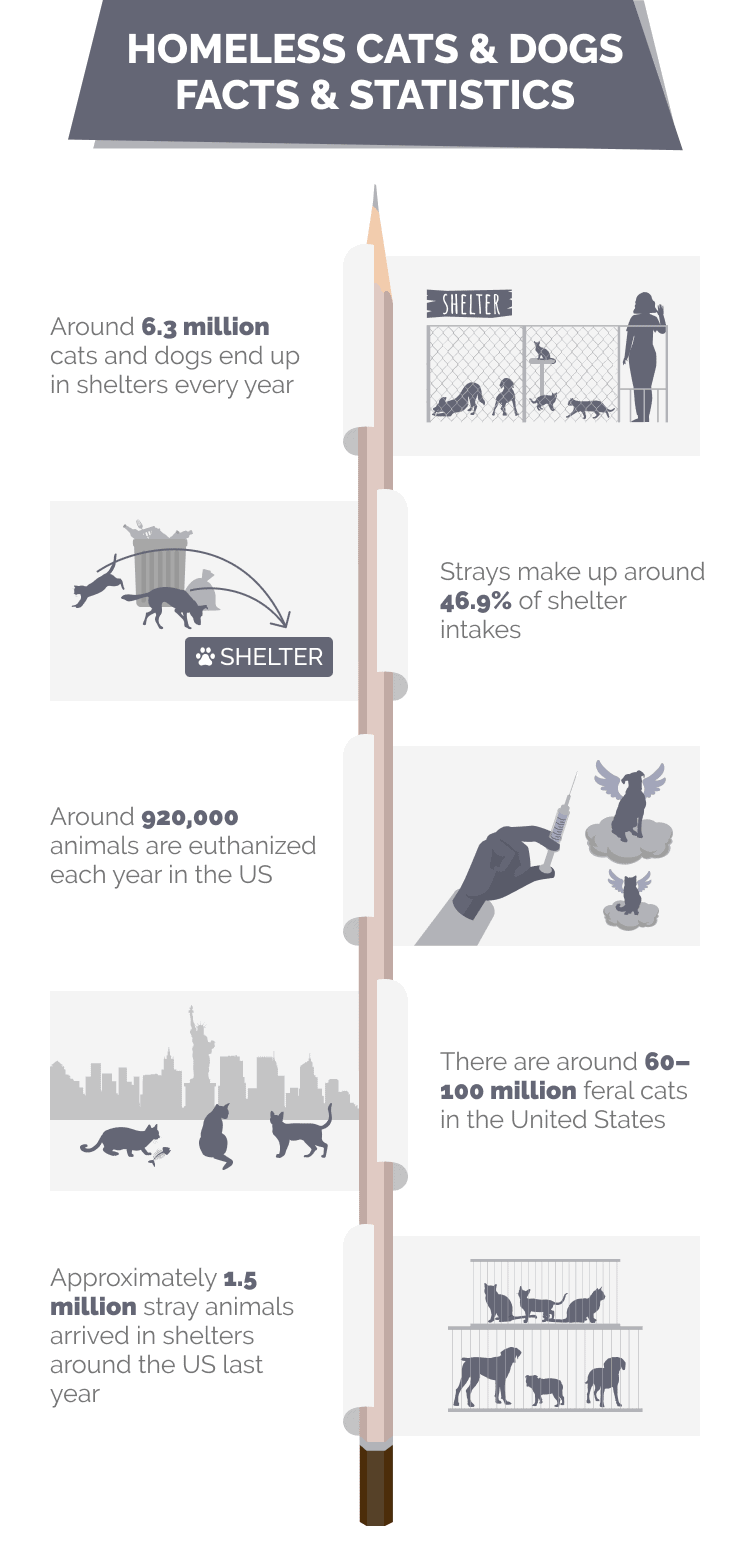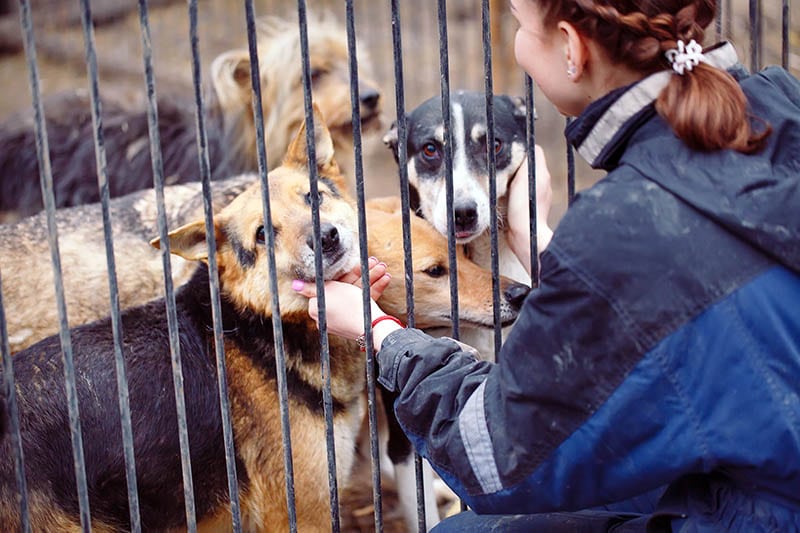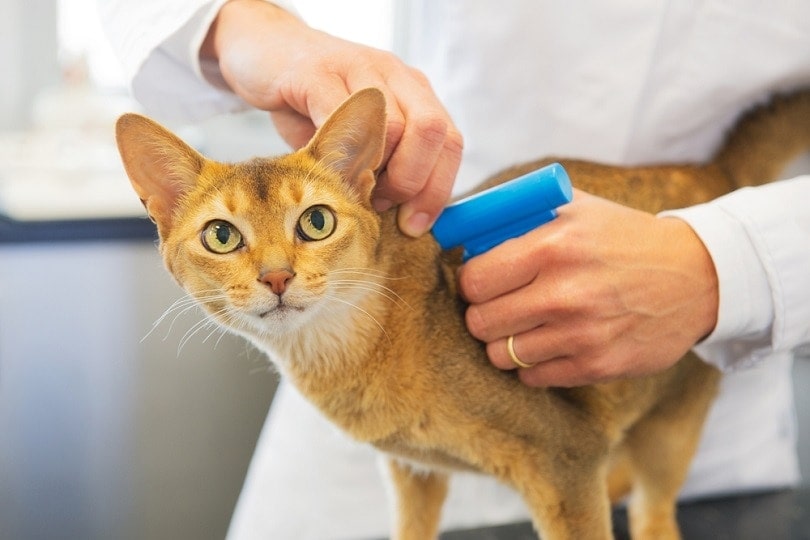How Many Homeless Cats & Dogs Live in the US? 2024 Statistics Update
By Lorre Luther
Updated on

Click to Skip Ahead
Note: This article’s statistics come from third-party sources and do not represent the opinions of this website.
Pet ownership has dramatically increased in the United States, and more pet owners are paying premium prices for food, supplies, insurance, and presents. However, the country’s love of pets has not helped reduce the number of stray animals. Adopting cats and dogs from shelters or fostering animals can alleviate overcrowding and reduce euthanizations, but as you’ll see from these statistics, the homeless cat and dog problem requires more than individual efforts to make a lasting impact.
The 10 Statistics About Homeless Cats and Dogs in the US
- There were around 90.5 million pet-owning households in 2022.
- Around 45.3 million US homes had at least one cat in 2022.
- Approximately 69 million families owned dogs in 2022.
- The US feral cat population reached 60–100 million in 2016.
- Around 6.3 million cats and dogs end up in shelters every year.
- Approximately 1.5 million stray animals arrived in shelters around the US in 2020.
- Strays made up almost 46.9% of shelter intakes in 2020.
- Over 750,000 animals were relinquished by their owners in 2020.
- Around 920,000 animals are euthanized each year in the US.
- In 2019, close to 4.1 million shelter animals were adopted.

General Statistics Regarding the US Cat and Dog Population
1. There were around 90.5 million pet-owning households in 2022.
(American Pet Products Association)
In 2022, around 70% of US households had at least one pet, a statistic that includes cats, dogs, horses, fish, and small mammals. Millennials made up the largest percentage of pet parents, and Baby Boomers came in second. People adopted pets in droves during the pandemic, and the vast majority of those new pet parents are still enjoying their new buddy’s companionship.
2. Around 45.3 million US homes had at least one cat in 2022.
(Insurance Information Institute)
Of the 90.5 million pet-owning households in 2022, just under half owned cats. Back in 2018, there were approximately 58,000,000 pet cats in the US. Pet ownership continues to increase worldwide, fueled in part by the pandemic adoption boom. Cat parents typically spend less on annual medical care than dog owners.

3. Approximately 69 million families owned dogs in 2022.
(Insurance Information Institute)
Increased global wealth has led to a rise in worldwide pet ownership. Back in 2016, dogs were the most pets worldwide. Dog owners are likely to consider their pets family members, and dogs generally cost more to maintain than cats.
4. The US feral cat population reached 60–100 million in 2016.
(PubMed)
Precisely counting feral cat populations is notoriously difficult to do. It’s often impossible to distinguish feral cats from outdoor kitties. Feral cats live in a variety of environments. Some live in colonies, and others live alone close to food sources, like behind apartment buildings. Feral cat colonies often vary in size depending on food availability.
 General Statistics Regarding Animal Homelessness in the US
General Statistics Regarding Animal Homelessness in the US
5. Around 6.3 million cats and dogs end up in shelters every year.
(American Society for the Prevention of Cruelty to Animals)
Millions of animals pass through the doors of US shelters every year, including stray animals and lost and relinquished pets. Cats made up 50.7% of all shelter intakes, and dogs accounted for 49.3%.

6. Approximately 1.5 million stray animals arrived in shelters around the US in 2020.
(Shelter Animals Count)
Counting the number of stray animals in the US is challenging since there’s no centralized governmental database in which relevant statistics are collected. In 2011, several animal welfare organizations, including the Humane Society of the United States (HSUS) and the American Society for the Prevention of Cruelty to Animals (ASPCA), created a national database to collect information about shelters and the animals they serve.
7. Strays made up almost 46.9% of shelter intakes in 2020.
(Shelter Animals Count)
In 2020, shelters accepted around 1.5 million pets, around 46.9% of which were stray animals. The number of animals entering shelters has declined over time. In 2011, approximately 7.2 million were admitted to shelters. And around 4.1 million pets were adopted from shelters in 2019; 2.1 million were cats and 2 million dogs.
 Statistics Regarding Animal Relinquishment
Statistics Regarding Animal Relinquishment
8. Over 750,000 animals were relinquished by their owners in 2020.
(Shelter Animals Count)
Shelter admission numbers don’t provide a complete picture of the true extent of the pet homelessness problem, as many dogs and cats are rehomed through informal channels. Common reasons for giving up pets include pet behavioral issues, family problems, and housing difficulties.

9. Around 920,000 animals are euthanized each year in the US.
(American Society for the Prevention of Cruelty to Animals)
Hundreds of thousands of animals are euthanized each year after entering shelters. While many are ill or have severe behavioral problems, some healthy animals also end up being killed when facilities run out of space. But the number of animals euthanized has dropped thanks to the creation of several no-kill communities across the nation.
10. In 2019, close to 4.1 million shelter animals were adopted.
(American Society for the Prevention of Cruelty to Animals)
Not every animal that ends up at a shelter faces a tragic demise—many cats and dogs end up finding forever homes! And around 4.1 million pets were adopted from shelters in 2019. Approximately 2.1 million were cats, and 2 million were dogs.

Frequently Asked Questions About Animal Homelessness
Do Shelters Often Return Found Pets to Owners?
Yes. Hundreds of thousands of pets in the US are returned to their owners from shelters every year. Dogs tend to be reunited with their humans more often than cats. Shelters usually check to see if newly admitted animals are microchipped, and they have access to various registration databases.
But keep in mind that being microchipped won’t do much good if you haven’t submitted your details to the proper registry and kept your contact information updated. People regularly forget to update their details after a move.

Is Microchipping the Best Way to Ensure My Pet Is Returned if They Get Lost?
Microchipping, along with a collar featuring your pet’s name and your contact information, gives your pet the best shot at being returned home quickly and safely. ID tags make it easy for concerned individuals to identify your animal as a pet with a home. And they can reach out and let you know your pet’s condition or whereabouts without having to spend time taking your pet to a shelter or veterinarian.
Without a collar, some people may be unable to tell if your pet is a stray, particularly if the animal has been struggling outdoors for a few days. And some potential rescuers may be reluctant to take your pet to a shelter due to concerns about the potential for euthanasia. But microchips absolutely save lives once an animal gets to a shelter or veterinarian. Microchipping your pet and keeping your contact information updated with the proper registry dramatically increases the likelihood that your pet will be returned home if they escape or wander off.
How Can I Tell if My Pet’s Microchip Has Been Properly Registered?
Ask your veterinarian to check your pet’s microchip during your companion’s next appointment and write down the registration number. Use the American Animal Hospital Association’s (AAHA) microchip ID lookup tool to find where your pet’s microchip is registered. You can contact those registries to see if they have your current contact information.

Are All Shelters the Same?
No. There’s a bit of variation in how shelters operate. No-kill shelters only euthanize pets who are dangerous or extremely ill. Never kill shelters simply don’t euthanize any animals. Traditional shelters accept all pets and sometimes turn to euthanasia to manage overcrowding. Government-run shelters are essentially open facilities that take all animals and euthanize healthy animals when required when there’s no room left.
The best no-kill facilities save 90–95% of the animals that pass through their doors, but some save far fewer pets. Many organizations regularly rely on volunteer foster families to take in pets when their facilities fill up. And others work with organizations in different parts of the country to arrange transfers to areas with less crowded shelters where animals have a better chance of being adopted. (PAWS Chicago)
Have No Kill Shelters Really Reduced the Number of Euthanized Animals?
Absolutely. The no-kill shelter movement started in the 1990s when the San Francisco SPCA implemented no-kill policies. In 1984, before the no-kill movement started, around 17 million animals were being euthanized in shelters yearly. But after the introduction of no-kill policies, that number began to decrease. The widespread adoption of low and no-cost spay and neuter programs and increased community participation in trap-neuter-release programs most likely contributed to the decline. (Best Friends)
Why Do People Relinquish Pets?
People relinquish pets for several reasons, from being unable to meet the animal’s exercise and attention needs to being unable to afford a pet deposit when moving. Families forced to give up animals for health reasons often find homes for their pets with friends or family members.
People also say goodbye to pets due to allergies, personal problems, and housing issues. The most commonly given pet-centric reasons for rehoming include illness, aggression, and uncontrollable destructive behavior. (Open Journal of Animal Sciences)
Conclusion
Millions of pets ended up in US animal shelters in 2022, and many were informally rehomed. People relinquish animals for reasons ranging from allergies to pet behavioral problems. A general lack of affordable pet-friendly rental housing also contributes to pet homelessness. Of those animals who end up in shelters, around 4.1 million are adopted every year. But shelter numbers are rising, so consider adopting or fostering if you have the time, room, and a bit of love to give.
Featured Image Credit: Jumpstory

 General Statistics Regarding Animal Homelessness in the US
General Statistics Regarding Animal Homelessness in the US









